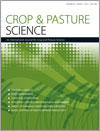Melilotus albus is recognised as an important source of forage for ruminant animals in rangelands, particularly some of the germplasm of Melilotus collected in Argentina. This study was designed to evaluate the effects of 2 years of selection in M. albus for late flowering and branching on forage yield in a 2-year field plot experiment and to evaluate the effects of selection for late flowering on photoperiodic requirements in a 1-year pot experiment under natural and artificial lighting conditions. Three populations were evaluated, namely original population (T), a population selected for late flowering and greater number of basal branches (ET1), and a population selected only for late-flowering plants (ET2).
The field plot experiment showed that total DM yield per year was higher for ET1 and T than for ET2 in Year 1 and higher for ET1 than T and ET2 in Year 2. Relative leaf yield was higher for ET1 and ET2 than for T in both years. Leaf number was greater for ET1 than for ET2 and T in both years. The number of new basal and total branches was greater in ET1 than in ET2 and T for both years.
The pot experiment showed that days to flowering, calculated as the average of natural and artificial lighting treatments, were higher in ET2 and ET1 (83.4 days ± 15 and 72.8 days ± 19, respectively), than in T (61.2 days ± 21). Supplementary lighting reduced days to flowering compared with natural lighting conditions for all populations (58.7 days ± 13 v. 86.1 days ± 12).
Results showed that 2 years of selection proved to be efficient in breeding for late flowering and greater number of basal branches in M. albus. The longer vegetative stage observed in the improved populations can be explained by the selection of plants which require a longer photoperiod to flower. Selection for late flowering and greater number of basal branches resulted in a population with more leaves and higher relative leaf yield.





